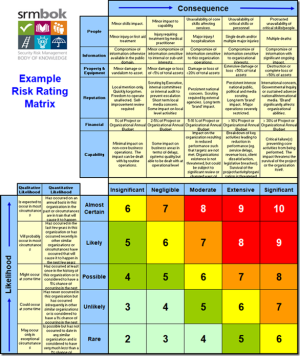Guest post by one of the USA based students in The Centre for Leadership and Learning in Risk (CLLR) online program https://cllr.com.au/online-courses-overseas-students/
Heinrich’s Propaganda
 Virtually everyone that works in the safety industry has seen and is familiar with “The Hienrich pyramid”. The pyramid, and its underlying ideology, permeates virtually every employer’s health and safety program. Based on a book written in 1931 by Herbert William Heinrich, the model infers that if one focuses on near misses and first aid cases found at the bottom of the pyramid, this will lead to a reduction or elimination in lost time injuries and deaths at the top of the pyramid.
Virtually everyone that works in the safety industry has seen and is familiar with “The Hienrich pyramid”. The pyramid, and its underlying ideology, permeates virtually every employer’s health and safety program. Based on a book written in 1931 by Herbert William Heinrich, the model infers that if one focuses on near misses and first aid cases found at the bottom of the pyramid, this will lead to a reduction or elimination in lost time injuries and deaths at the top of the pyramid.
Those inferences are inaccurate and misleading (one example of many is the BP Deepwater Horizon disaster in 2010 in which 11 people killed on the same day they were celebrating 7 years without a lost time injury). The mindset created by this produces cultural by-products that are antithetical to making sense of risk. Despite this, Heinrich’s pyramid continues to be used as a propaganda tool for workplace safety that amplifies the ideology of “zero harm” and “all injuries are preventable”.
How and why would an occupation like safety, that purports to reduce harm in the workplace, continue to uphold a semiotic artifact that creates a self-defeating discourse? A closer look at the Social Amplification of Risk Framework (SARF) can shed some light.
The perception, or “feeling”, of risk is a complex phenomenon. It is subjective and can be distorted and manipulated by multiple processes. SARF uses research from fields such as sociology, psychology, anthropology, and communications theory. It gives an overview on the way communication of risk events are transmitted from the sender through intermediate stations and finally to a receiver. These processes interact with the hazard, and either amplifies or attenuates the perception of risk. That perception then modifies our behavioral responses to the risk (Kasperson., et. al. 1988) in one way or another.
By and large, the methodology of assessing risk in the safety industry does not utilize (and is ignorant of) the SARF model, nor does it consider risk in its full social context and complexity. The methodology behind the pyramid focuses narrowly on the probability of events and the magnitude of specific consequences. (Kasperson 177). Yet the evidence clearly shows there are a series of heuristics and biases that govern risk perception. Most people have much more comprehensive conception of risk, and there are a myriad of factors that influence our perception of risk (Kasperson 178).
When one filters risk events through the ideology of the pyramid, a discourse of blame, punishment and dehumanization begins to take shape. Because of the discourse and trajectory created by absolutes like “all injuries are preventable”, the cause for events at the bottom of the pyramid (near misses, first aid injuries) get misattributed to “safety is a choice you make”. Using the SARF, we see how the communication of a risk event (e.g. cut finger) gets transmitted from the sender (investigators looking the into the “root cause” of the cut finger) through intermediate stations (the ideology created by the belief in the pyramid) and finally to the receiver (management/employees react with added rules, regulations). When we follow this interaction with individual psychological, social and cultural factors, we see how the perceptions of risk are amplified. This also helps the safety industry to (in their minds) validate the ideology of “zero harm” or “all incidents are preventable”.
The ripple effects of this is evident in the continued use of behavior based safety (BBS) as a way to control and manage issues at the bottom of the pyramid. One of the many issues with BBS is management often believes that once a particular risk has been identified, that a specific, prescribed behavior will result. But since risk is subjective, the reaction to a particular risk will vary from one person to the next. Fundamentalist authority (BBS, absolutist, binary logic thinking) rules, controls and enforces, but it does not develop ownership. It alienates and marginalizes itself from the very people it seeks to win over. (Long 43 – Risk Make Sense).
Further evidence of pyramid propaganda is the fundamental attribution error regarding safety metrics. It is common for a company to be labeled as “safe” if their safety metrics are at or below a certain level. Aside from planting the seeds of hubris in the organization (one of many hidden layers of risk), a host of other issues are created such as underreporting of injuries and the objectification employees.
Additionally, resources that would (or should) be helping employees learn how to make sense of risk are diverted from doing so. Instead, hours upon hours are spent at a desk or in meetings tracking, collecting and analyzing injury data. More distortion of reality occurs because these metrics get misattributed as evidence of a safe work culture. This amplification of safety metrics has now ballooned into an oppressive stream of bureaucracy and paperwork. The bureaucracy created by safety metrics has gotten to the point that an entire industry has evolved whose sole purpose is to manage the paperwork and bureaucracy created by the propaganda of the pyramid.
Paradoxically, the propaganda of the pyramid attenuates the fallibility of humans. By framing workplace incidents as a conscious, discretionary behaviors (labels such as “stupid”, “lazy” or “common sense” are typical) a discourse that fallibility is a weakness is sewn into the fabric of the culture. As a result an ideology of perfectionism (that understands its own success by the absence of human error) both alienates employees and promotes fear and uncertainty.
There is good news; ways to subversively counteract the propaganda and spin of the pyramid do exist. To begin, it is essential to understand and recognize the impact that the discourse (https://safetyrisk.net/zero-discourse-and-perfectionism/ ) and trajectory (https://safetyrisk.net/the-trajectory-of-zero-vision/ ) of the language and semiotics in an organization have on its culture. Building on that, the pyramid’s hidden curriculum (https://safetyrisk.net/until-nothing-changes-in-safety/ ) can be surfaced and a more humanizing, learning environment can evolve. Finally getting beyond the propaganda will require a move toward critical thinking (https://safetyrisk.net/critical-thinking-and-questioning-in-safety/ ), which is not necessarily “being critical” but would include acquiring and using skills such as self-reflection, independent research ability, determining relevance, identifying biases and Socratic questioning.
Not an easy task to be sure, but then again the oppressive propaganda spread by the Heinrich pyramid did not happen overnight either.


Bernard Corden says
Dear Dave,
Whenever I see the pyramid and hear the safety evangelist I reach for my revolver and my poor pet goldfish in the accommodation donga suffers from advanced attention deficit disorder.
Rob Long says
S. Saran. For something to be scientific and logical requires evidence and argument against counter evidence. There is neither in Heinrich’s book. Indeed, the evidence is overwhelming that the logic of the pyramid is false. Heinrich himself acknowledges that the pyramid is a ‘philosophy’ (p.12) in ‘Industrial Accident Prevention’ (1959) and defines safety as accident prevention. Indeed, his axioms he called ‘self-evident truths’ (p.20) in his 1931 publication which he later withdrew and doubted but he never shifted from that engineering-focused philosophy. Interestingly, his whole model is based on objects and energy with no clear anthropological clarity even though he calls his work a ‘philosophy’. He asserts on p.62 that ‘accidents are controllable’ and later acknowledges the existence of ‘common sense’ (p.64). Although he advocates for the collection of data, he produces none but writes the book based upon his mechanistic and positivist assumptions in behaviourist theory. The work is astoundingly dated and naturally lacks all we know today through cognitive and neuropsychology. The Heinrich delusion includes no discussion of human decision making, the nature of the human mind or the notion of unpredicability/fallibility. Unfortunately, it continues to influence the safety industry and is still in text books. I wonder what other industry would base its thinking in 2018 on a text from 1931???
S. Saran says
There are two major wrong statements made in the essay. First, Heinrich never said that all accidents are preventable. In his book “Industrial Accident Prevention 1931″, Heinrich has clearly written that ” …….2% of the accidents are not preventable”. Secondly, Heinrich has written that since the root of the minor, serious and fatal accidents lie in the thousands of unsafe acts and conditions (that lie at the base of the pyramid), he advised managements to take the “near miss accidents” also seriously and to investigate it and take corrective measures. Hence, I find the “pyramid triangle”due to Heinrich very logical and scientific.
Dave Collins says
I can see why safety people want the pyramid to be logical, scientific and true but, when you have limited resources, where are they best focused? Unfortunately, Safety tends to go for the low hanging fruit which, although time consuming, is easy to identify, available in abundance, easy to count and easy to control in the hope that it will affect the next layer up on the pyramid they then label the process “Zero Harm”. There are too many examples of celebrations of long periods without minor injury and excessive hubris followed by major disaster ie Deepwater Horizon. There is a good reason why, in Australia anyway, SWMS are only required for high risk construction tasks and yet Safety, in the pursuit of zero, wants them for tying safety shoe laces and making a cup of tea – this rubbish just takes valuable resources away from managing the critical risks. It’s hard for me to imagine how controlling paper cuts and twisted ankles can prevent a bridge from collapsing but, unfortunately, I can imagine how that process could indirectly contribute to it collapsing.